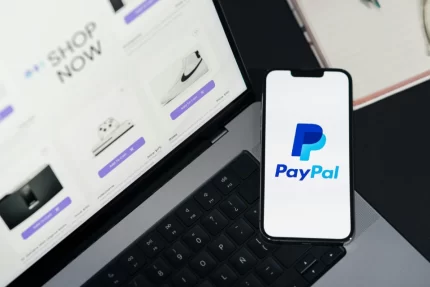- By Mohd Zeeshan
- 15 Jan, 2025
- Internet Marketing
4 Things Paypal Users Should Know To Make Their Online Transactions More Secure
Here’s a revised version of your article, focusing on clarity and engagement while retaining all critical information:
4 Essential Tips to Keep Your PayPal Account Safe from Scammers
As online commerce continues to grow, so do the risks of fraud and scams. While companies like PayPal have implemented strong security measures, users must take precautions to protect their accounts. Fortunately, safeguarding your PayPal account doesn’t require advanced technical skills—just a bit of vigilance and common sense.
Here are four practical tips to help you stay safe when using PayPal:
1. Never Click on Links in PayPal Emails
Scammers often send emails designed to look like official PayPal communications, complete with logos and professional formatting. The golden rule?
Never click on links in emails claiming to be from PayPal.
Instead, type “paypal.com” directly into your browser’s address bar. By going to the PayPal website yourself, you ensure you’re not redirected to a fraudulent site.
If you receive a suspicious email, forward it to spoof@paypal.com. PayPal’s team will confirm whether it’s legitimate. Remember, PayPal will rarely, if ever, ask you to log in via an email link.
2. Learn to Spot Fake Emails
Fraudulent emails often urge immediate action with alarming messages like:
- “Your account will be suspended unless you log in now.”
- “Unusual activity detected on your account.”
- “Receipt of payment to [random company name].”
These emails exploit emotions to prompt quick, unthinking actions. To verify an email’s legitimacy:
- Look at the sender’s email address carefully.
- View the email’s source code (many email programs allow this).
- Check where links actually lead. Fraudulent URLs often include “PayPal” in the middle of the address but end with an unrelated domain, such as ipox.xx.com.my.
If a URL doesn’t start with https://www.paypal.com, it’s a scam.
3. What to Do If You Accidentally Clicked or Shared Your Information
If you’ve entered your PayPal login details on a phishing site, act immediately:
- Log in to PayPal via paypal.com and change your password.
- Monitor your account for unauthorized transactions.
- Report any suspicious activity through PayPal’s Unauthorized Activity Form (found in the Help Center under “Protection Policies”).
If you’re especially concerned, contact PayPal’s support team directly to report the incident and secure your account.
4. Recognize Common Scam Tactics
Scammers often use psychological tricks to pressure users into acting impulsively. Here are some red flags to watch for:
- Messages creating urgency (e.g., “Act now, or your account will be deleted!”).
- Unexpected payment receipts for unfamiliar companies.
- Official-looking websites or emails that mimic PayPal but contain subtle errors (e.g., typos or odd sender addresses).
By training yourself to pause and think before clicking on links or responding to suspicious emails, you can greatly reduce the risk of falling victim to phishing attacks.
Conclusion
While PayPal and other online platforms work hard to protect users, your vigilance is key to staying safe. By following these four tips—avoiding email links, recognizing fake messages, acting quickly if you suspect fraud, and staying alert to common scams—you can significantly lower your risk of account breaches.
Online safety requires a combination of awareness and common sense. With these precautions in mind, you can enjoy safer and more secure online transactions.
Would you like to expand on any section or tailor this article further? Let me know!












